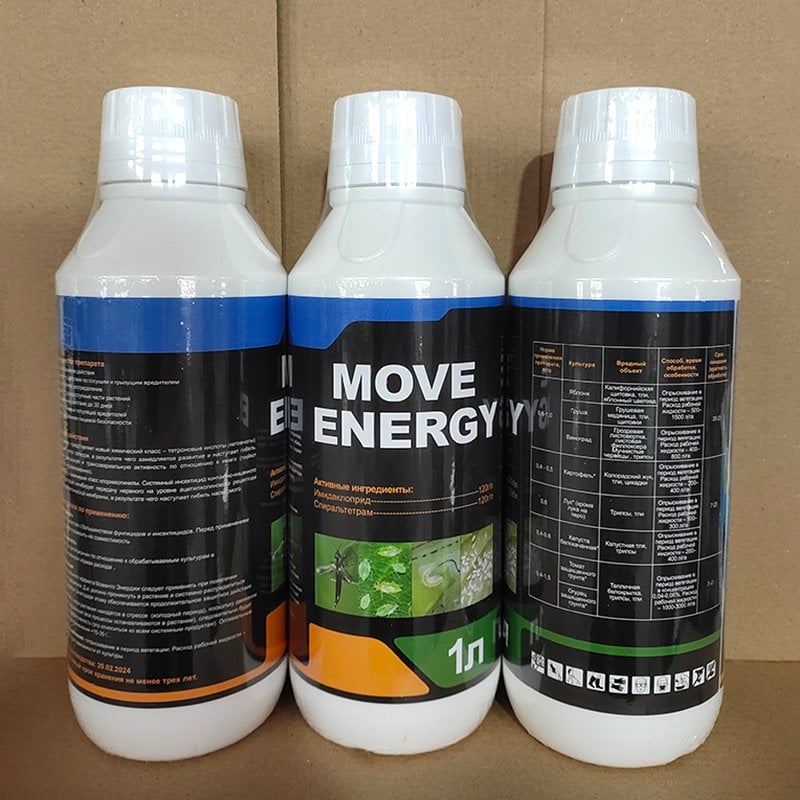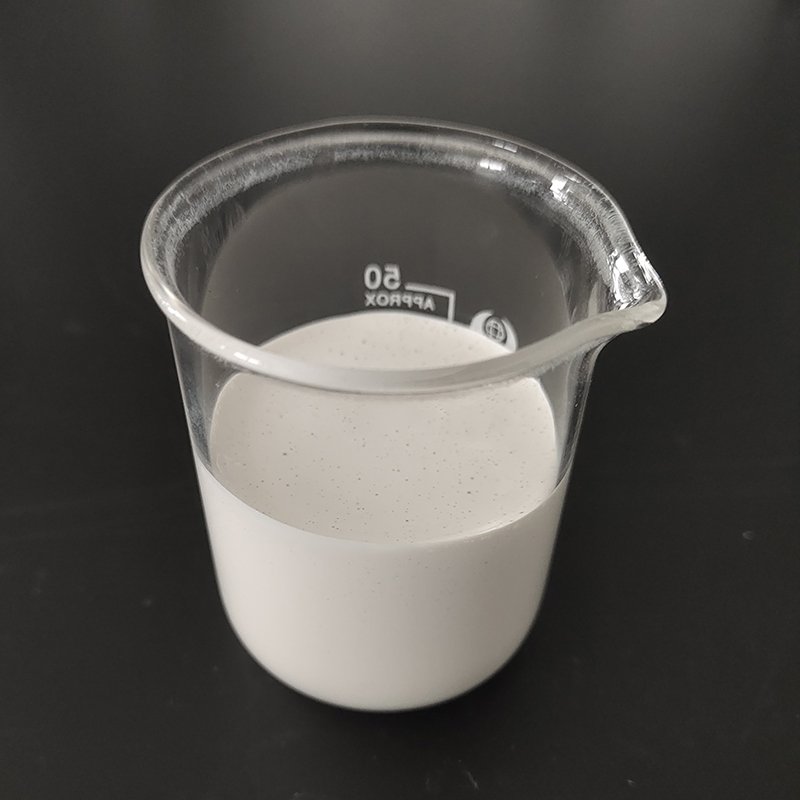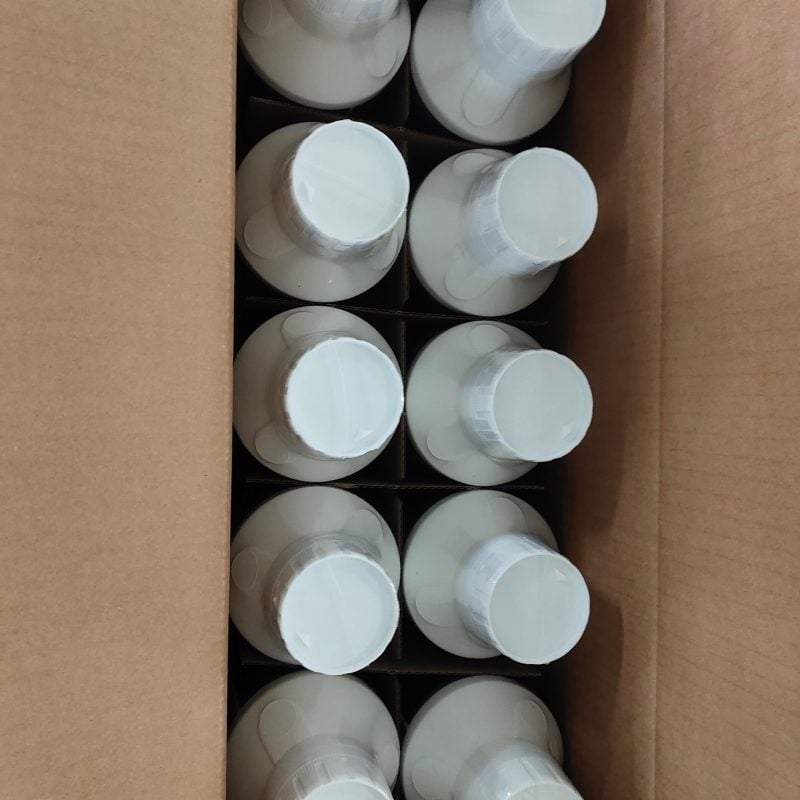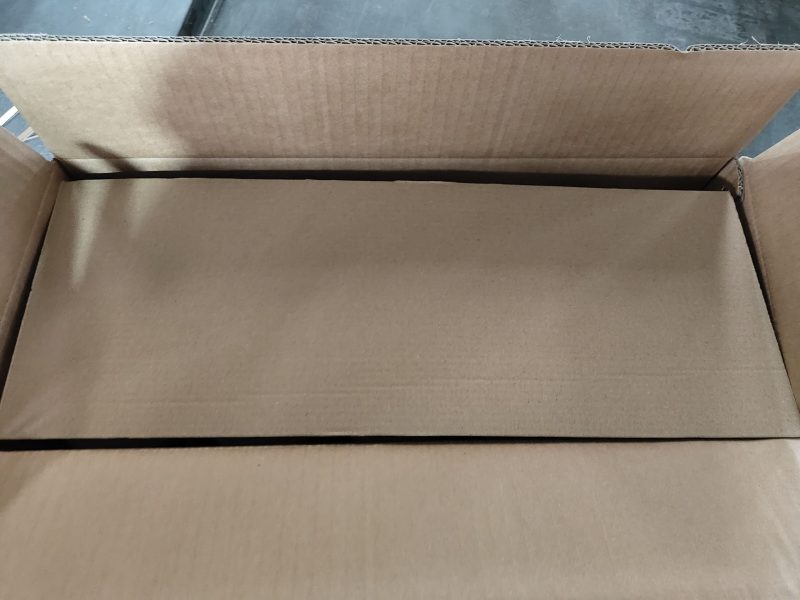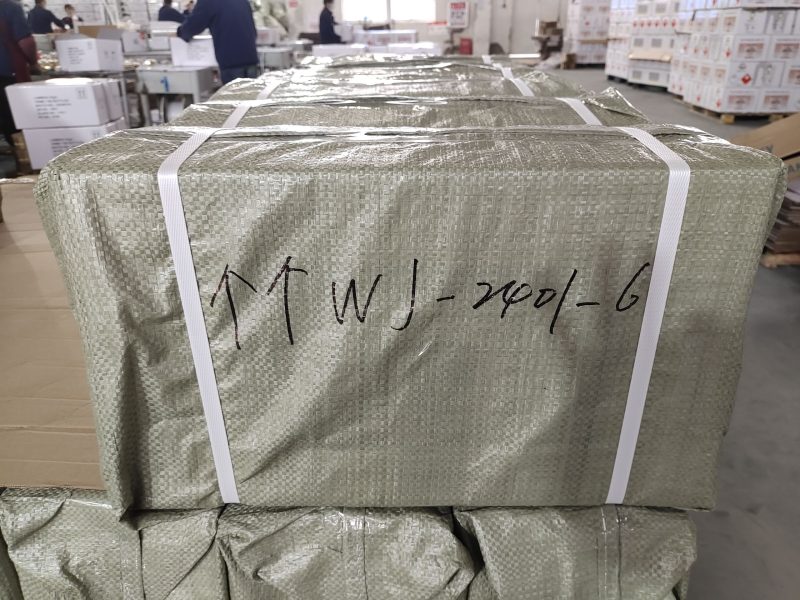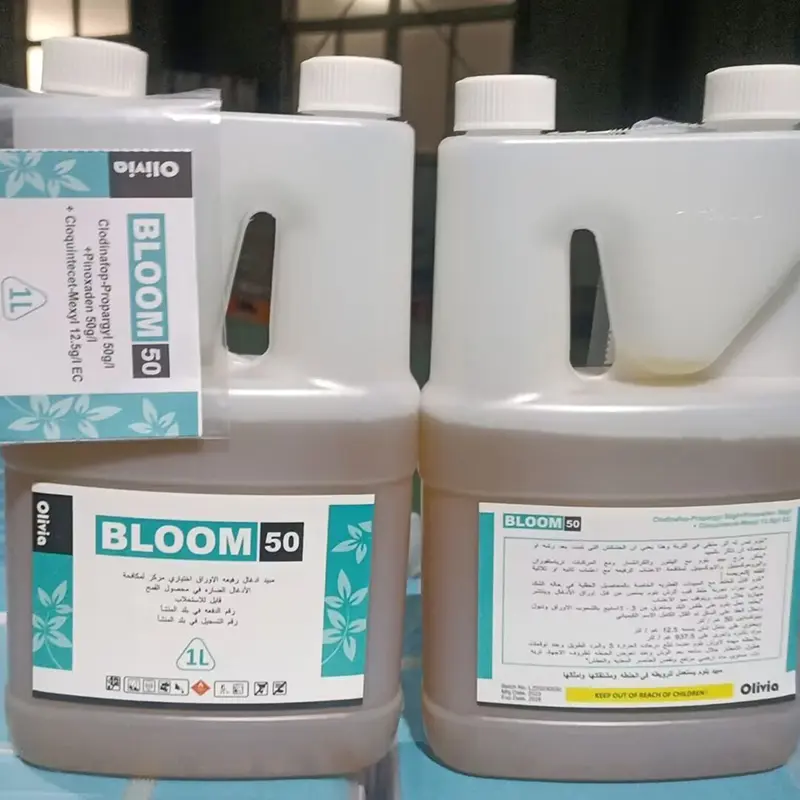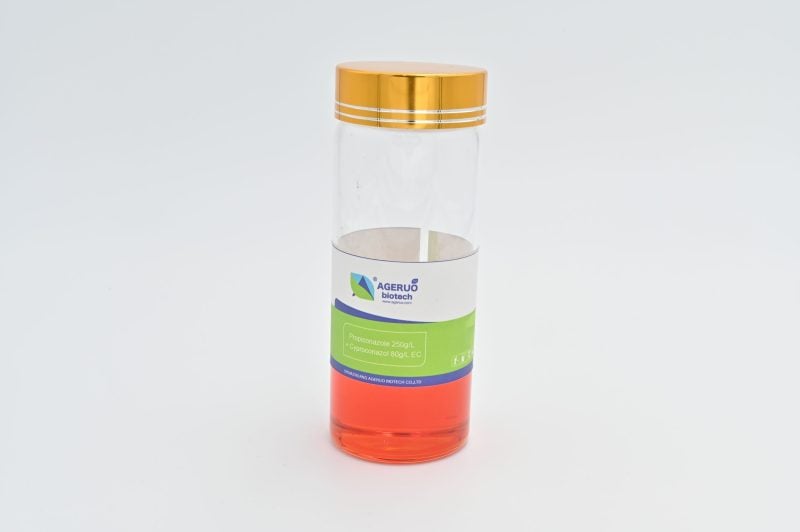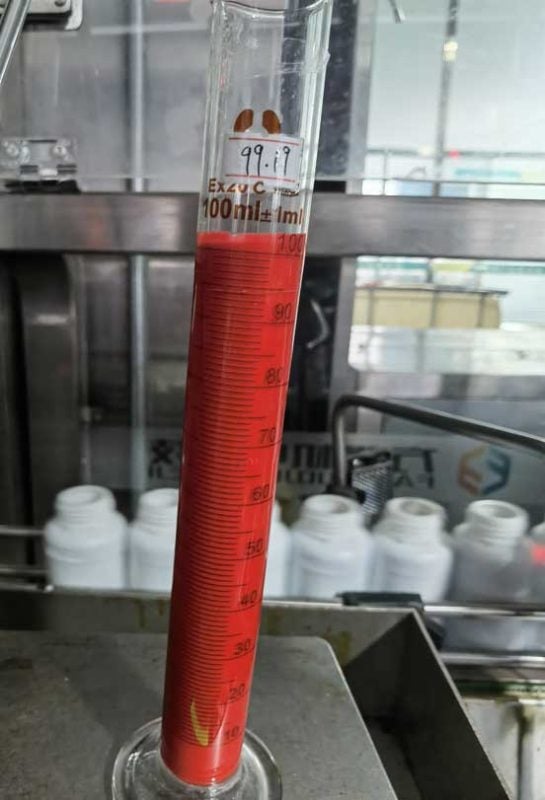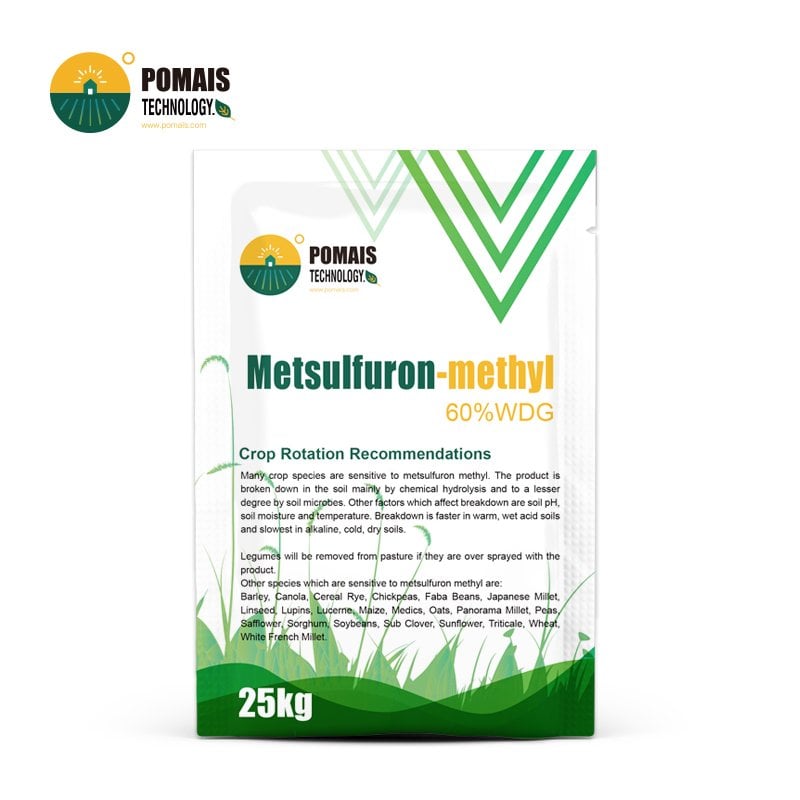Spirotetramat Insecticide
Spirotetramat is a systemic insecticide that belongs to the tetramic acid class. It is widely used for controlling a variety of sap-feeding pests, such as aphids, whiteflies, mealybugs, scale insects, and leafhoppers. Spirotetramat has a unique mode of action, as it is fully systemic and moves both upward and downward within the plant, protecting both new and existing plant growth.
- Designed for Professional Buyers & Bulk Orders
- This product is available for business purchase and large-scale distribution.
- We support custom packaging, labeling, and formulation to meet your market needs.
- Let’s build your brand together.

About Spirotetramat Insecticide
About Spirotetramat Insecticide
| Product Name | Spirotetramat (insecticide) |
|---|---|
| Active Ingredient | Spirotetramat |
| CAS Number | 203313-25-1 |
| Molecular Formula | C21H27NNaO5 |
| Target Pests | Aphids, whiteflies, thrips, scales, and other sucking insects |
| Applicable Uses | Vegetables, fruits, ornamentals, and nuts |
| Dosage | Varies by formulation; typically 0.75-1.25 L/ha for 240 SC |
| Mode of Action | Systemic insecticide; inhibits lipid biosynthesis in pests, leading to death |
| Common Formulations | 150 OD (Oil Dispersion), 22.4% SC, 24% SC, 30% SC, 50% SC, 240 SC (Suspension Concentrate), WDG (Water Dispersible Granules) |
| Packaging Types | 500ml, 1L, 5L bottles |
| Related Terms | Spirotetramat insecticide, Spirotetramat 150 OD, Spirotetramat 240 SC, Spirotetramat thrips, Spirotetramat for sale |
| Company Strengths | POMAIS offers high-quality Spirotetramat formulations for global markets, supports OEM/ODM services, and provides competitive pricing with custom packaging solutions |
Spirotetramat is an effective solution for managing sucking pests in a variety of crops, including vegetables, fruits, and ornamentals. Its systemic action and long-lasting residual control make it a popular choice for growers. Spirotetramat 150 OD and 240 SC formulations are available for sale in various packaging sizes.
For more details on Spirotetramat products or to inquire about pricing, feel free to contact us!
We manufacture and supply high-quality Spirotetramat insecticide, offering customized packaging and labeling services. All products are produced under ISO 9001 certified manufacturing processes, ensuring top-tier quality and consistency.
Spirotetramat Insecticide
Spirotetramat is an innovative insecticide that provides powerful control of sucking pests such as silverleaf whitefly, aphids, scales, and thrips across a wide range of crops, including vegetables, citrus, stone fruit, mangoes, grapes, apples, and cotton. Additionally, it is effective against diamondback moth larvae in brassicas. Spirotetramat is particularly advantageous in controlling pests that are hidden on inner leaves, areas that other insecticides may not effectively reach.
Mode of Action:
Spirotetramat acts by inhibiting lipid biosynthesis in the target pests, affecting the growth and development of immature stages of insects. It moves systemically within the plant, providing protection to both new growth and treated parts of the plant. The dual translocation ensures that even hidden pests, such as those feeding on the underside of leaves, are affected.
Spirotetramat inhibits lipid biosynthesis in insects, which prevents them from developing properly and leads to their death. This mode of action targets the insect’s ability to produce essential fats, disrupting the growth of nymphs and larvae, and reducing pest populations over time. It is classified as a Group 23 insecticide by the Insecticide Resistance Action Committee (IRAC), which means it has a unique mode of action that helps manage pest resistance when rotated with other insecticides.
Benefits
- Dual Systemic Action: Moves both upward and downward within the plant, offering protection to all parts, including new growth.
- Long Residual Control: Provides extended control over pests, reducing the need for frequent applications.
- Effective Against Sucking Pests: Ideal for controlling aphids, whiteflies, thrips, and other sucking insects.
- Low Toxicity to Beneficial Insects: Safe for beneficial insects and pollinators when used according to label instructions.
Single Formulations:
- Spirotetramat 22.4% SC
- Spirotetramat 24% SC
- Spirotetramat 30% SC
- Spirotetramat 50% SC
- Spirotetramat WDG (Water Dispersible Granules)
Mixed Formulations:
- Spirotetramat + Thiamethoxam
- Spirotetramat + Thiacloprid
- Spirotetramat + Pyriproxyfen
- Spirotetramat + Pymetrozine
- Spirotetramat + Imidacloprid
- Spirotetramat + Fenpyroximate
- Spirotetramat + Fenbutatin Oxide
- Spirotetramat + Etoxazole
- Spirotetramat + Dinotefuran
- Spirotetramat + Chlorpyrifos
- Spirotetramat + Buprofezin
- Flonicamid + Spirotetramat
- Clothianidin + Spirotetramat
- Bifenthrin + Spirotetramat
- Bifenazate + Spirotetramat
- Abamectin + Spirotetramat
Formulation Images:
- Standard SC (Suspension Concentrate)
- WDG (Water Dispersible Granules)
Key Features
- Excellent Control of Hidden Pests: Spirotetramat offers superior control of pests that hide on inner leaves, providing complete protection.
- Shoot to Root Protection: The insecticide translocates within the plant, protecting both above-ground and below-ground parts from sucking pests.
- Long-Lasting Effect: Provides extended protection, ensuring a higher yield by minimizing pest damage over time.
Target Pests and Crops
| Crops | Pests |
|---|---|
| Peppers | Western flower thrips |
| Tomatoes | Western flower thrips |
| Mangoes | White (common) mango scale |
| Citrus | White louse scale |
| Beans (Green) | Tomato Thrips (Frankliniella schultzei) |
| Celery | Tomato Thrips (Frankliniella schultzei) |
| Grapes (Table) | Plague Thrips (Thrips imagines) |
| Pome Fruit | Tuber Mealybug |
| Grapes (Table) | Tuber Mealybug |
| Stone Fruit | Tuber Mealybug |
Target Pests:
Spirotetramat is highly effective against sap-sucking insects, including:
Aphids
Whiteflies
Mealybugs
Psyllids
Thrips
Scale insects
Leafhoppers
It is often used in crops where these pests are particularly damaging, as they can cause significant loss of yield and transmit viral diseases.
Main Crop Applications:
Fruits: Spirotetramat is commonly used in citrus, apples, pears, grapes, and stone fruits to control pests like aphids, scale insects, and whiteflies.
Vegetables: It is applied in tomatoes, cucumbers, peppers, and other vegetables to manage sap-feeding pests like whiteflies and aphids.
Ornamentals: It is also used on ornamental plants to control pests such as thrips and mealybugs, ensuring that plants maintain their health and appearance.
Field crops: Spirotetramat is used in crops like cotton, soybeans, and potatoes to combat various sap-feeding pests.
Spirotetramat insecticide uses
| Crops | Target Pests | Rate/ha | Critical Comments |
|---|---|---|---|
| Vegetables | Aphids, whiteflies, thrips, spider mites | 100-200 ml/ha | Apply at the early infestation stage. Ensure thorough coverage of foliage and fruit for maximum effectiveness. |
| Fruit Trees | Scale insects, leafhoppers, whiteflies | 100-150 ml/ha | Apply during periods of active pest feeding for best results. |
| Ornamentals | Thrips, mealybugs, mites | 100-150 ml/ha | Ensure complete coverage of leaves for optimal results. |
| Turf and Lawn | Thrips, aphids, mites | 150-250 ml/ha | Apply when pest activity is high, targeting areas where pests are commonly found. |
Application Method:
Foliar spray: Spirotetramat is typically applied as a foliar spray, where it is absorbed by the plant’s leaves and translocated systemically throughout the plant. This ensures that the insecticide reaches even hidden pests, such as those feeding on new growth or in protected areas of the plant.
Systemic activity: One of the key advantages of Spirotetramat is its bidirectional systemic movement. It moves both upward (acropetally) and downward (basipetally), meaning it protects both the older parts of the plant and new growth, making it particularly useful in controlling pests that feed on different parts of the plant.
Timing: Spirotetramat should be applied when pest populations are low to moderate, and before heavy infestations occur. It is effective at controlling both immature and adult stages of pests, though it is most effective when targeting immature stages such as larvae or nymphs.
Our Market
We have successfully exported Spirotetramat products to 56 countries worldwide, receiving positive feedback for our high-quality formulations. Specific countries where we have exported this product include Iraq, Syria, Indonesia, and Venezuela.
Customers’ Feedback
All our products undergo rigorous quality testing to ensure they meet the highest standards and fulfill the needs of our customers. This commitment to quality has earned us a strong reputation and repeat business from satisfied clients around the globe.
| Product Name | Spirotetramat (insecticide) |
|---|---|
| Active Ingredient | Spirotetramat |
| CAS Number | 203313-25-1 |
| Molecular Formula | C21H27NNaO5 |
| Target Pests | Aphids, whiteflies, thrips, scales, and other sucking insects |
| Applicable Uses | Vegetables, fruits, ornamentals, and nuts |
| Dosage | Varies by formulation; typically 0.75-1.25 L/ha for 240 SC |
| Mode of Action | Systemic insecticide; inhibits lipid biosynthesis in pests, leading to death |
| Common Formulations | 150 OD (Oil Dispersion), 22.4% SC, 24% SC, 30% SC, 50% SC, 240 SC (Suspension Concentrate), WDG (Water Dispersible Granules) |
| Packaging Types | 500ml, 1L, 5L bottles |
| Related Terms | Spirotetramat insecticide, Spirotetramat 150 OD, Spirotetramat 240 SC, Spirotetramat thrips, Spirotetramat for sale |
| Company Strengths | POMAIS offers high-quality Spirotetramat formulations for global markets, supports OEM/ODM services, and provides competitive pricing with custom packaging solutions |
Spirotetramat is an effective solution for managing sucking pests in a variety of crops, including vegetables, fruits, and ornamentals. Its systemic action and long-lasting residual control make it a popular choice for growers. Spirotetramat 150 OD and 240 SC formulations are available for sale in various packaging sizes.
For more details on Spirotetramat products or to inquire about pricing, feel free to contact us!
We manufacture and supply high-quality Spirotetramat insecticide, offering customized packaging and labeling services. All products are produced under ISO 9001 certified manufacturing processes, ensuring top-tier quality and consistency.
Spirotetramat Insecticide
Spirotetramat is an innovative insecticide that provides powerful control of sucking pests such as silverleaf whitefly, aphids, scales, and thrips across a wide range of crops, including vegetables, citrus, stone fruit, mangoes, grapes, apples, and cotton. Additionally, it is effective against diamondback moth larvae in brassicas. Spirotetramat is particularly advantageous in controlling pests that are hidden on inner leaves, areas that other insecticides may not effectively reach.
Mode of Action:
Spirotetramat acts by inhibiting lipid biosynthesis in the target pests, affecting the growth and development of immature stages of insects. It moves systemically within the plant, providing protection to both new growth and treated parts of the plant. The dual translocation ensures that even hidden pests, such as those feeding on the underside of leaves, are affected.
Spirotetramat inhibits lipid biosynthesis in insects, which prevents them from developing properly and leads to their death. This mode of action targets the insect’s ability to produce essential fats, disrupting the growth of nymphs and larvae, and reducing pest populations over time. It is classified as a Group 23 insecticide by the Insecticide Resistance Action Committee (IRAC), which means it has a unique mode of action that helps manage pest resistance when rotated with other insecticides.
Benefits
- Dual Systemic Action: Moves both upward and downward within the plant, offering protection to all parts, including new growth.
- Long Residual Control: Provides extended control over pests, reducing the need for frequent applications.
- Effective Against Sucking Pests: Ideal for controlling aphids, whiteflies, thrips, and other sucking insects.
- Low Toxicity to Beneficial Insects: Safe for beneficial insects and pollinators when used according to label instructions.
Single Formulations:
- Spirotetramat 22.4% SC
- Spirotetramat 24% SC
- Spirotetramat 30% SC
- Spirotetramat 50% SC
- Spirotetramat WDG (Water Dispersible Granules)
Mixed Formulations:
- Spirotetramat + Thiamethoxam
- Spirotetramat + Thiacloprid
- Spirotetramat + Pyriproxyfen
- Spirotetramat + Pymetrozine
- Spirotetramat + Imidacloprid
- Spirotetramat + Fenpyroximate
- Spirotetramat + Fenbutatin Oxide
- Spirotetramat + Etoxazole
- Spirotetramat + Dinotefuran
- Spirotetramat + Chlorpyrifos
- Spirotetramat + Buprofezin
- Flonicamid + Spirotetramat
- Clothianidin + Spirotetramat
- Bifenthrin + Spirotetramat
- Bifenazate + Spirotetramat
- Abamectin + Spirotetramat
Formulation Images:
- Standard SC (Suspension Concentrate)
- WDG (Water Dispersible Granules)
Key Features
- Excellent Control of Hidden Pests: Spirotetramat offers superior control of pests that hide on inner leaves, providing complete protection.
- Shoot to Root Protection: The insecticide translocates within the plant, protecting both above-ground and below-ground parts from sucking pests.
- Long-Lasting Effect: Provides extended protection, ensuring a higher yield by minimizing pest damage over time.
Target Pests and Crops
| Crops | Pests |
|---|---|
| Peppers | Western flower thrips |
| Tomatoes | Western flower thrips |
| Mangoes | White (common) mango scale |
| Citrus | White louse scale |
| Beans (Green) | Tomato Thrips (Frankliniella schultzei) |
| Celery | Tomato Thrips (Frankliniella schultzei) |
| Grapes (Table) | Plague Thrips (Thrips imagines) |
| Pome Fruit | Tuber Mealybug |
| Grapes (Table) | Tuber Mealybug |
| Stone Fruit | Tuber Mealybug |
Target Pests:
Spirotetramat is highly effective against sap-sucking insects, including:
Aphids
Whiteflies
Mealybugs
Psyllids
Thrips
Scale insects
Leafhoppers
It is often used in crops where these pests are particularly damaging, as they can cause significant loss of yield and transmit viral diseases.
Main Crop Applications:
Fruits: Spirotetramat is commonly used in citrus, apples, pears, grapes, and stone fruits to control pests like aphids, scale insects, and whiteflies.
Vegetables: It is applied in tomatoes, cucumbers, peppers, and other vegetables to manage sap-feeding pests like whiteflies and aphids.
Ornamentals: It is also used on ornamental plants to control pests such as thrips and mealybugs, ensuring that plants maintain their health and appearance.
Field crops: Spirotetramat is used in crops like cotton, soybeans, and potatoes to combat various sap-feeding pests.
Spirotetramat insecticide uses
| Crops | Target Pests | Rate/ha | Critical Comments |
|---|---|---|---|
| Vegetables | Aphids, whiteflies, thrips, spider mites | 100-200 ml/ha | Apply at the early infestation stage. Ensure thorough coverage of foliage and fruit for maximum effectiveness. |
| Fruit Trees | Scale insects, leafhoppers, whiteflies | 100-150 ml/ha | Apply during periods of active pest feeding for best results. |
| Ornamentals | Thrips, mealybugs, mites | 100-150 ml/ha | Ensure complete coverage of leaves for optimal results. |
| Turf and Lawn | Thrips, aphids, mites | 150-250 ml/ha | Apply when pest activity is high, targeting areas where pests are commonly found. |
Application Method:
Foliar spray: Spirotetramat is typically applied as a foliar spray, where it is absorbed by the plant’s leaves and translocated systemically throughout the plant. This ensures that the insecticide reaches even hidden pests, such as those feeding on new growth or in protected areas of the plant.
Systemic activity: One of the key advantages of Spirotetramat is its bidirectional systemic movement. It moves both upward (acropetally) and downward (basipetally), meaning it protects both the older parts of the plant and new growth, making it particularly useful in controlling pests that feed on different parts of the plant.
Timing: Spirotetramat should be applied when pest populations are low to moderate, and before heavy infestations occur. It is effective at controlling both immature and adult stages of pests, though it is most effective when targeting immature stages such as larvae or nymphs.
Our Market
We have successfully exported Spirotetramat products to 56 countries worldwide, receiving positive feedback for our high-quality formulations. Specific countries where we have exported this product include Iraq, Syria, Indonesia, and Venezuela.
Customers’ Feedback
All our products undergo rigorous quality testing to ensure they meet the highest standards and fulfill the needs of our customers. This commitment to quality has earned us a strong reputation and repeat business from satisfied clients around the globe.
Related Products
Latest News

